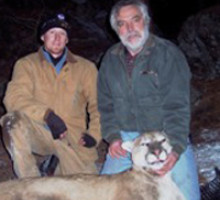
Reviews
The book is enriched by more than 25 years of research... All the chapters are interesting, highly readable and, in places, somewhat autobiographical... Likely to appeal to anyone interested in big cats or the ecology of large predators, this book should be particularly useful to wildlife professionals, including ecologists, conservationists and researchers.
The book was an enjoyable read and is a valuable contribution to North America's predatory fauna... I loved all the pictures and thought that it complemented the text perfectly. In fact, I wish more scientifically-oriented books were like this: simple to read, containing concise information, and well illustrated!
Book Details
Preface
Acknowledgments
1. Introduction
2. Ecology of the Black Hills
3. Characteristics of Black Hills Mountain Lions
4. Population Dynamics of Mountain Lions
5. Disease Ecology of Mountain Lions
6
Preface
Acknowledgments
1. Introduction
2. Ecology of the Black Hills
3. Characteristics of Black Hills Mountain Lions
4. Population Dynamics of Mountain Lions
5. Disease Ecology of Mountain Lions
6. Nutritional Ecology of Mountain Lions
7. Genetics of Mountain Lions
8. Perceptions of Mountain Lions
Epilogue
Index






